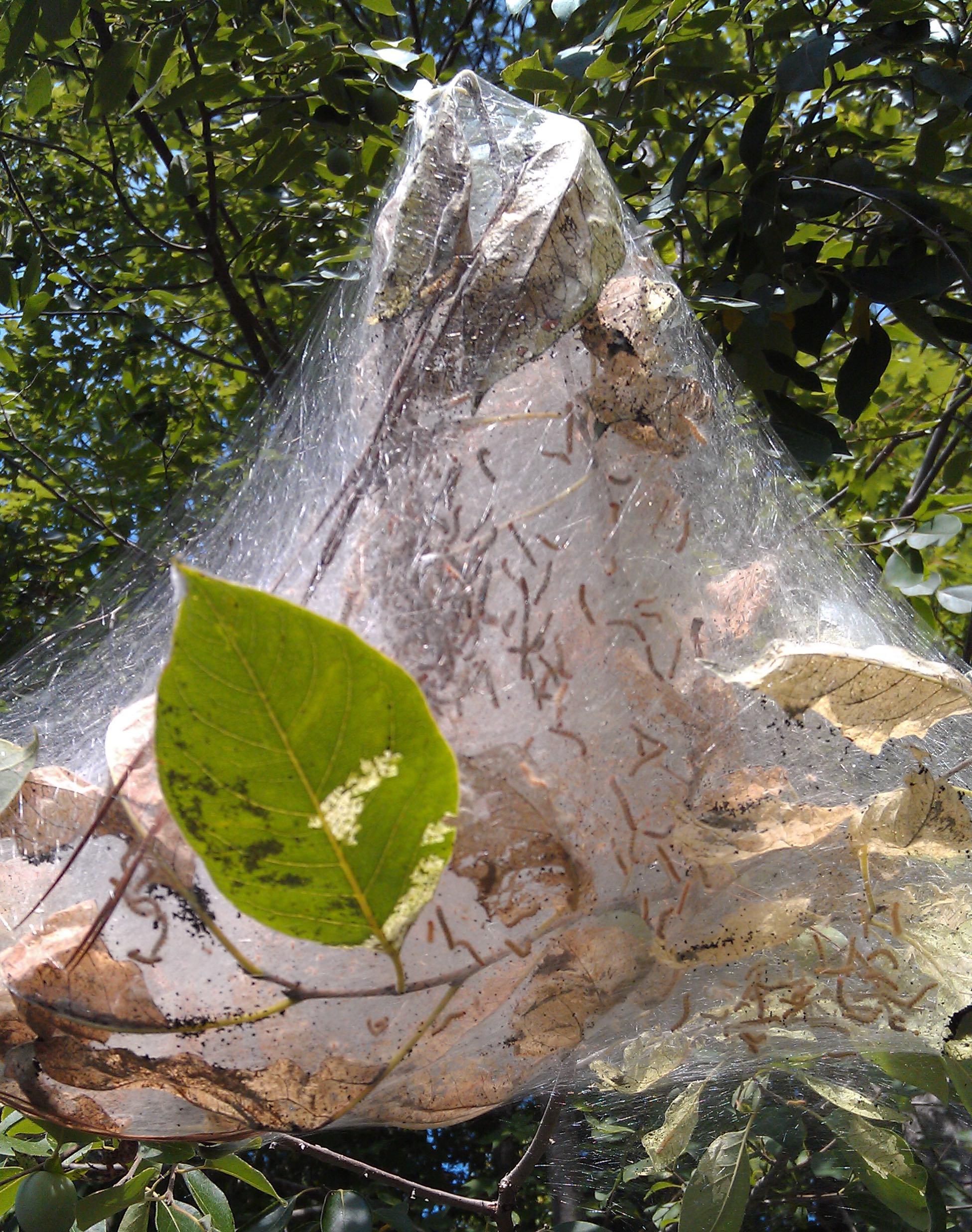Fall Webworms
go.ncsu.edu/readext?1089749
en Español / em Português
El inglés es el idioma de control de esta página. En la medida en que haya algún conflicto entre la traducción al inglés y la traducción, el inglés prevalece.
Al hacer clic en el enlace de traducción se activa un servicio de traducción gratuito para convertir la página al español. Al igual que con cualquier traducción por Internet, la conversión no es sensible al contexto y puede que no traduzca el texto en su significado original. NC State Extension no garantiza la exactitud del texto traducido. Por favor, tenga en cuenta que algunas aplicaciones y/o servicios pueden no funcionar como se espera cuando se traducen.
Português
Inglês é o idioma de controle desta página. Na medida que haja algum conflito entre o texto original em Inglês e a tradução, o Inglês prevalece.
Ao clicar no link de tradução, um serviço gratuito de tradução será ativado para converter a página para o Português. Como em qualquer tradução pela internet, a conversão não é sensivel ao contexto e pode não ocorrer a tradução para o significado orginal. O serviço de Extensão da Carolina do Norte (NC State Extension) não garante a exatidão do texto traduzido. Por favor, observe que algumas funções ou serviços podem não funcionar como esperado após a tradução.
English
English is the controlling language of this page. To the extent there is any conflict between the English text and the translation, English controls.
Clicking on the translation link activates a free translation service to convert the page to Spanish. As with any Internet translation, the conversion is not context-sensitive and may not translate the text to its original meaning. NC State Extension does not guarantee the accuracy of the translated text. Please note that some applications and/or services may not function as expected when translated.
Collapse ▲You may have seen them already, fall webworms in many different types of trees. Fall webworms, a native insect, are actually caterpillars, and mature as moths in the adult stage. This lifecycle is known as complete metamorphosis, having a distinct egg, larvae (caterpillar), pupae, and adult stage. Most chewing insects (with the exception of grasshoppers) have complete metamorphosis. Another type of insect lifecycle called incomplete metamorphosis only has three stages, the egg, larvae or immature stage, and the adult stage. Most piercing/sucking insects, like aphids, scale, or whitefly have incomplete metamorphosis.
After the fall webworms eggs hatch, they begin building their web-like nest in trees as they mature, typically from July through September. And although they defoliate the area the webbing is in, and feed on other leaves on the tree, they generally don’t harm the tree. Even though the webbing can be unsightly, control measures are generally not recommended or warranted since they will be gone once the leaves drop in the fall. Also, chemical sprays may not make it through the webbing, and can also harm other beneficial insects feeding on the fall webworms. Pruning out the webbing isn’t recommended as it may cause your tree to become unsightly. Non-chemical control methods may include punching holes in the webbing with a long pole or stick to allow birds and other beneficials access to feed on them.
For more information about fall webworms or any other horticulture topic, feel free to contact Matt Lenhardt at 336-593-8179 or at matt_lenhardt@ncsu.edu.
Photo credit: S.D. Frank, NC State University.





